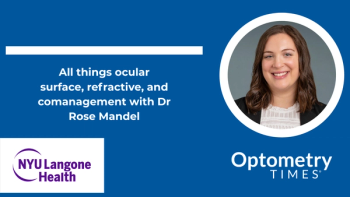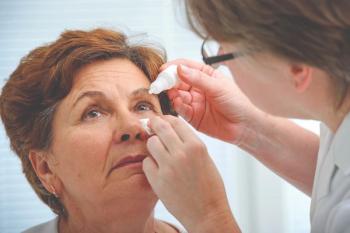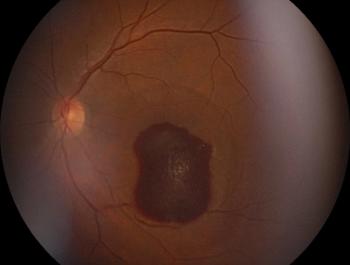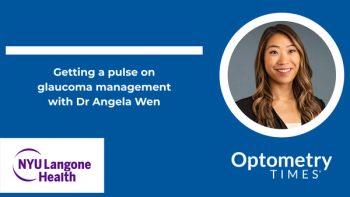
Indiana University receives funding for advancing oculomics
The 3-year, $4.8 million award comes from the NIH Venture Program Oculomics Initiatives.
Indiana University (IU) scientists have received funding support for a new program from the National Institutes of Health to support the emerging field of oculomics, which uses the eye as an avenue to investigate diseases that affect the whole body.1 The 3 year, $4.8 million award comes from the NIH Venture Program Oculomics Initiatives and will support the development of next generation ophthalmoscopes, which can detect early warning signs of conditions such as diabetes, heart and kidney disease, sickle cell anemia, and Alzheimer disease by scanning the eye.1
“This research is about using the eye as a window on health,” Burns said. “We want to give healthcare providers the clearest view they can hope to get into the body, non-invasively.”
Stephen A. Burns, professors at the IU School of Optometry, has been named as the principal investigator and will be working with a host of co-investigators, with one being Eleftherios Garyfallidis, associate professor of Intelligent Systems Engineering at the IU Luddy School of Informatics, Computing, and Engineering. Burns has been conducting research using the eye to detect diseases since the early 2000s, and was a member of a IU School of Optometry team that pioneered the application of adaptive optics scanning laser systems in the observation of the human eye.1
Other researchers on the project include co-principal investigator Amani Fawzi of Northwestern University, and co-investigators Alfredo Dubra of Stanford University and Toco Y. P. Chui of the New York Eye and Ear Infirmary of Mount Sinai.1
The ophthalmoscope that Burns and team will be using observes the human eye at a resolution of 2 microns, which will be able to show real time movement of red blood cells inside the eye’s arteries and veins. Burns has previously used the technology to identify biomarkers for diabetes and hypertension in the walls of the eye’s blood vessels.1
“There’s growing evidence of a strong retinal vascular component to Alzheimer’s disease,” Burns said. “You can currently see the signs with PET scans, which require large, multimillion-dollar instruments. If we can see the same signs with an eye scan, it’s a lot less invasive and a lot less costly.”
Machine learning and artificial intelligence methods will also be used to interpret the device’s results, which could reduce diagnosis time from days to minutes.1
For the first year of the project, the involved labs will align their instruments to the same level of sensitivity. Next, the research team will then focus on data validation in order to confirm that the new instruments’ readings align with earlier version of the technology. Scan interpretations done by the new AI system will also be compared to human analysists in order to confirm accuracy. The final year of the program will then test the device on clinical volunteers, with a majority of data from IU to come from participants recruited from the Atwater Eye Care Center.1
“Up to 80 percent of the population over the age of 60 has at least one health issue that may be detectable in the eye with our technology,” Burns said.
The goal of the program is to advance the technology until it is ready to progress from lab to servicing annual eye exams for patients, according to Burns. “Our challenge now is selectivity and specificity,” Burns said. “We need to show that we can detect the differences between conditions, to quickly and accurately interpret the signs of the various diseases we’re focusing on.”
Reference:
Non-invasive eye test for multiple diseases to advance under $4.8M NIH award. News release. Indiana University. October 11, 2024. Accessed January 21, 2025. https://news.iu.edu/live/news/38075-non-invasive-eye-test-for-multiple-diseases-to-advance?_gl=1*1oabs1a*_ga*MTQyMzQyNTgyOC4xNzM3NDg1Mzcx*_ga_61CH0D2DQW*MTczNzQ4NTM3MC4xLjAuMTczNzQ4NTM4MC41MC4wLjA
Newsletter
Want more insights like this? Subscribe to Optometry Times and get clinical pearls and practice tips delivered straight to your inbox.




















































.png)


